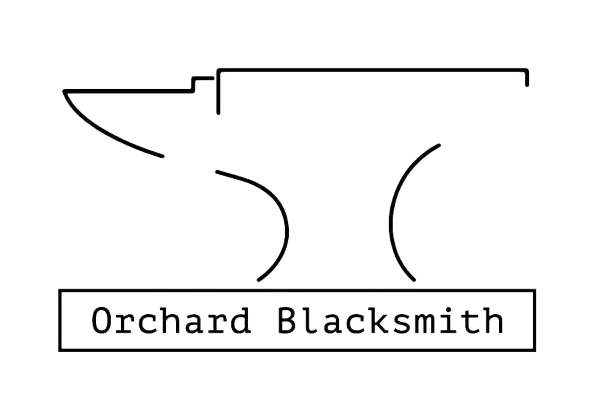Forging Angles 101: Strength, Fit, and Finish
One of the marks of a skilled blacksmith isn’t just the ability to move hot steel — it’s the ability to move it with precision. Nowhere is this more important than in forging angles. Whether you’re creating a tenon, a shoulder, a lap joint, or a right-angle bend, the accuracy of your angles directly impacts the strength, function, and appearance of the finished piece.
Let’s explore why correct angles matter, the problems caused by sloppy work, and some tips to improve your forging accuracy.
The Importance of Angles in Forging
Angles are the foundation of joinery. Every time two pieces of steel meet — whether in a hinge, a frame, or a tool — their strength depends on how cleanly they fit together.
Strength: A properly forged 90° shoulder allows two surfaces to meet flush, spreading force evenly instead of concentrating stress in one spot.
Fit: When pieces meet at consistent angles, the joint requires less filing, grinding, or adjustment. That saves time and preserves material.
Appearance: Clean, sharp angles give ironwork a professional look. Crooked shoulders or sloppy bends stand out immediately in finished work.
Problems Caused by Incorrect Angles
Small errors at the anvil can create big headaches later:
Weak Joints: Gaps at the meeting point create stress risers where cracks can form under load.
Excessive Grinding: If you rely on grinding to “fix” angles, you remove metal that should have been part of the joint.
Poor Alignment: Even minor misalignments multiply when you assemble complex projects like gates or frames.
Aesthetic Issues: Crooked or rounded angles distract from otherwise good craftsmanship.
How to Forge Angles Correctly
Getting crisp, accurate angles is a combination of technique, timing, and awareness:
Work at the Right Heat: For shoulders and bends, aim for a bright orange heat. Too hot and the steel will collapse; too cold and it may crack.
Use the Anvil Edge: Place your stock over a sharp or radiused edge of the anvil to define the angle cleanly.
Control Your Blows: Start with lighter, precise hammer strikes to establish the angle, then reinforce with firmer blows.
Check Often: Don’t wait until it’s cold — use a square or eyeball check at forging heat. Small corrections are easier to make while the steel is still workable.
Practice Consistency: Forge several identical pieces to train your eye and muscle memory.
Tools That Help
Spring Fullers: Create clear shoulders that act as natural angle guides.
Swage Blocks: Provide pre-formed angles and curves to support accuracy.
Squares and Gauges: Essential for checking your work as you go.
Final Thoughts
Angles may seem like small details, but they’re the backbone of strong, clean joinery. Forging them correctly ensures your work is structurally sound, visually sharp, and professional in finish.
If you would like to discuss a potential project, please do not hesitate to contact us.
